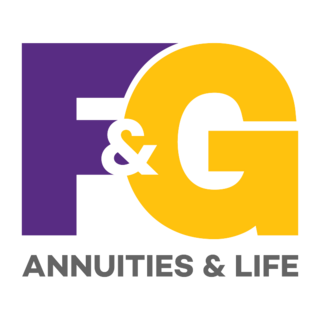
Insurance is a means of protection from financial loss. It is a form of risk management, primarily used to hedge against the risk of a contingent or uncertain loss.

Alleghany Corporation is an investment holding company originally created by the railroad entrepreneurs Oris and Mantis Van Sweringen as a holding company for their railroad interests. It was incorporated in 1929 and reincorporated in Delaware in 1984.
Chubb Limited, incorporated in Zürich, Switzerland, is the parent company of Chubb, a global provider of insurance products covering property and casualty, accident and health, reinsurance, and life insurance and the largest publicly traded property and casualty company in the world. Chubb operates in 55 countries and territories and in the Lloyd's insurance market in London. Clients of Chubb consist of multinational corporations and local businesses, individuals, and insurers seeking reinsurance coverage. Chubb provides commercial and personal property and casualty insurance, personal accident and supplemental health insurance, reinsurance and life insurance.
In finance, a surety, surety bond or guaranty involves a promise by one party to assume responsibility for the debt obligation of a borrower if that borrower defaults. Usually, a surety bond or surety is a promise by a surety or guarantor to pay one party a certain amount if a second party fails to meet some obligation, such as fulfilling the terms of a contract. The surety bond protects the obligee against losses resulting from the principal's failure to meet the obligation. The person or company providing the promise is also known as a "surety" or as a "guarantor".
Unum Group is a Chattanooga, Tennessee-based Fortune 500 insurance company formerly known as UnumProvident. Unum Group was created by the 1999 merger of Unum Corporation and The Provident Companies and comprises four distinct businesses – Unum US, Unum UK, Unum Poland and Colonial Life. Its underwriting insurers include The Paul Revere Life Insurance Company and Provident Life and Accident Insurance Company. Unum is the top disability insurer in both the United States and United Kingdom and also offers other insurance products including accident, critical illness and life insurance.

The Travelers Companies, Inc., commonly known as Travelers, is an American insurance company. It is the second-largest writer of U.S. commercial property casualty insurance, and the sixth-largest writer of U.S. personal insurance through independent agents. Travelers is incorporated in Minnesota, with headquarters in New York City, and its largest office in Hartford, Connecticut. Travelers also maintains a large office in St. Paul, Minnesota. It has been a component of the Dow Jones Industrial Average since June 8, 2009.
A fidelity bond is a form of insurance protection that covers policyholders for losses that they incur as a result of fraudulent acts by specified individuals. It usually insures a business for losses caused by the dishonest acts of its employees.

Mount Saint Agnes College was a Catholic women's college located in the Mount Washington neighborhood of Baltimore, Maryland. It opened in 1890 and was operated by the Sisters of Mercy. In 1971, Mount Saint Agnes merged with nearby Loyola College in Maryland, which still oversees the Mount Saint Agnes Alumnae Association. The college closed as its own degree-granting institution in 1972.

Transamerica Tower and originally built as the "USF&G Building", serving as headquarters of the United States Fidelity and Guarantee Company, a specialized insurance company founded in Baltimore in 1896, and relocated here from its former complex of three adjoining early 20th Century masonry structures at the southwest corner of South Calvert and Redwood Streets. Later occupied by and known as the Legg-Mason Building, it is a 40-story, 161 m (528 ft) skyscraper completed in 1973 in downtown Baltimore, Maryland at 100 Light Street on the city block bounded by South Charles, East Lombard, Light and East Pratt Streets, facing the former "The Basin" of the Helen Delich Bentley Port of Baltimore on the Northwest Branch of the Patapsco River and the newly iconic Inner Harbor downtown business waterfront redevelopment of the 1970s–1980s.
Bond insurance, also known as "financial guaranty insurance", is a type of insurance whereby an insurance company guarantees scheduled payments of interest and principal on a bond or other security in the event of a payment default by the issuer of the bond or security. It is a form of "credit enhancement" that generally results in the rating of the insured security being the higher of (i) the claims-paying rating of the insurer or (ii) the rating the bond would have without insurance.
Executive Life Insurance Company (ELIC) was once the largest life insurance company in California. Its financial problems and subsequent insolvency in April 1991 shocked its policyholders and the financial world.
The New York State Insurance Department (NYSID) was the state agency responsible for supervising and regulating all insurance business in New York State. It was regarded in the industry as one of the most state-of-the-art insurance regulatory agencies.
Financial Guaranty Insurance Company (FGIC) is an American monoline bond insurer established in 1983. It faced significant financial difficulties in 2008 which affected its ability to write new business. The firm was acquired in December 2003 by a consortium of investors including PMI Group, The Blackstone Group, The Cypress Group and CIVC Partners.

Reliance Insurance Company, now officially known as Reliance Insurance Company [in Liquidation], was founded in Philadelphia in 1817 and has undergone numerous corporate makeovers in the intervening years. As of October 3, 2001, the company has been in liquidation. As of 2020, Reliance was still in liquidation.

F&G, previously known as Fidelity and Guaranty Life Insurance Company is an American financial company, primarily providing annuities and life insurance. The company was founded in 1959 and is based in Des Moines, Iowa.
Guaranty associations are organizations which guarantee insurance policies in the event of an insolvency event.

The Baltimore Stock Exchange was a regional stock exchange based in Baltimore, Maryland. Opened prior to 1881, The exchange's building was destroyed by the Great Baltimore Fire of 1904, and was then located at 210 East Redwood Street in Baltimore's old financial district. In 1918, the exchange had 87 members, with six or seven members at the time serving the United States in World War I. The Baltimore Stock Exchange was acquired by the Philadelphia Stock Exchange in 1949, becoming the Philadelphia-Baltimore Stock Exchange. The Baltimore Stock Exchange Building was sold and renamed the Totman Building.
The Fidelity and Deposit Company is a trust company in Baltimore, Maryland. Founded in 1890 by Edwin Warfield, it was also known as the Fidelity and Deposit Trust Company of Maryland and the Fidelity and Deposit Company of Baltimore.
The National Bank of Commerce in New York was a national bank headquartered in New York City that merged into the Guaranty Trust Company of New York.








